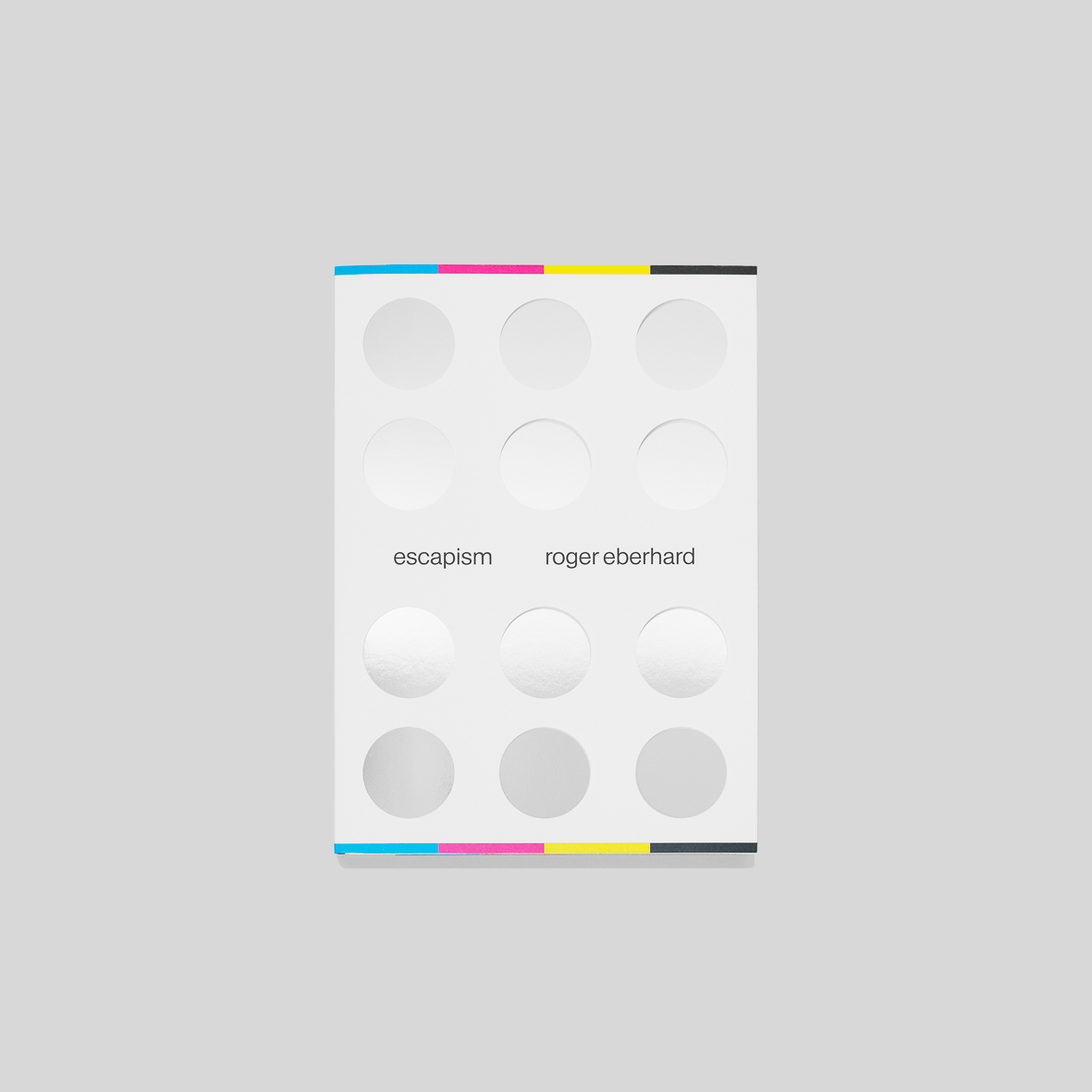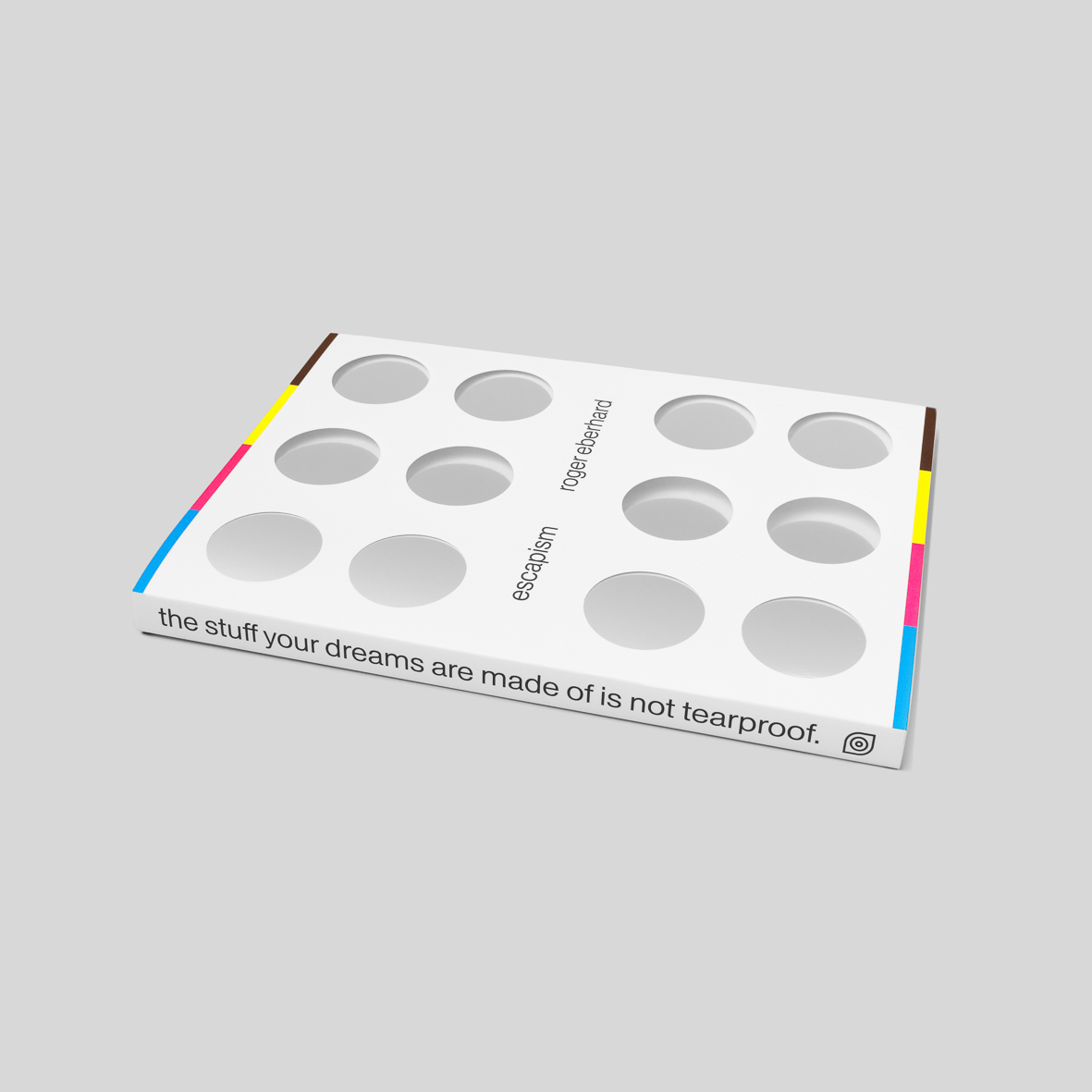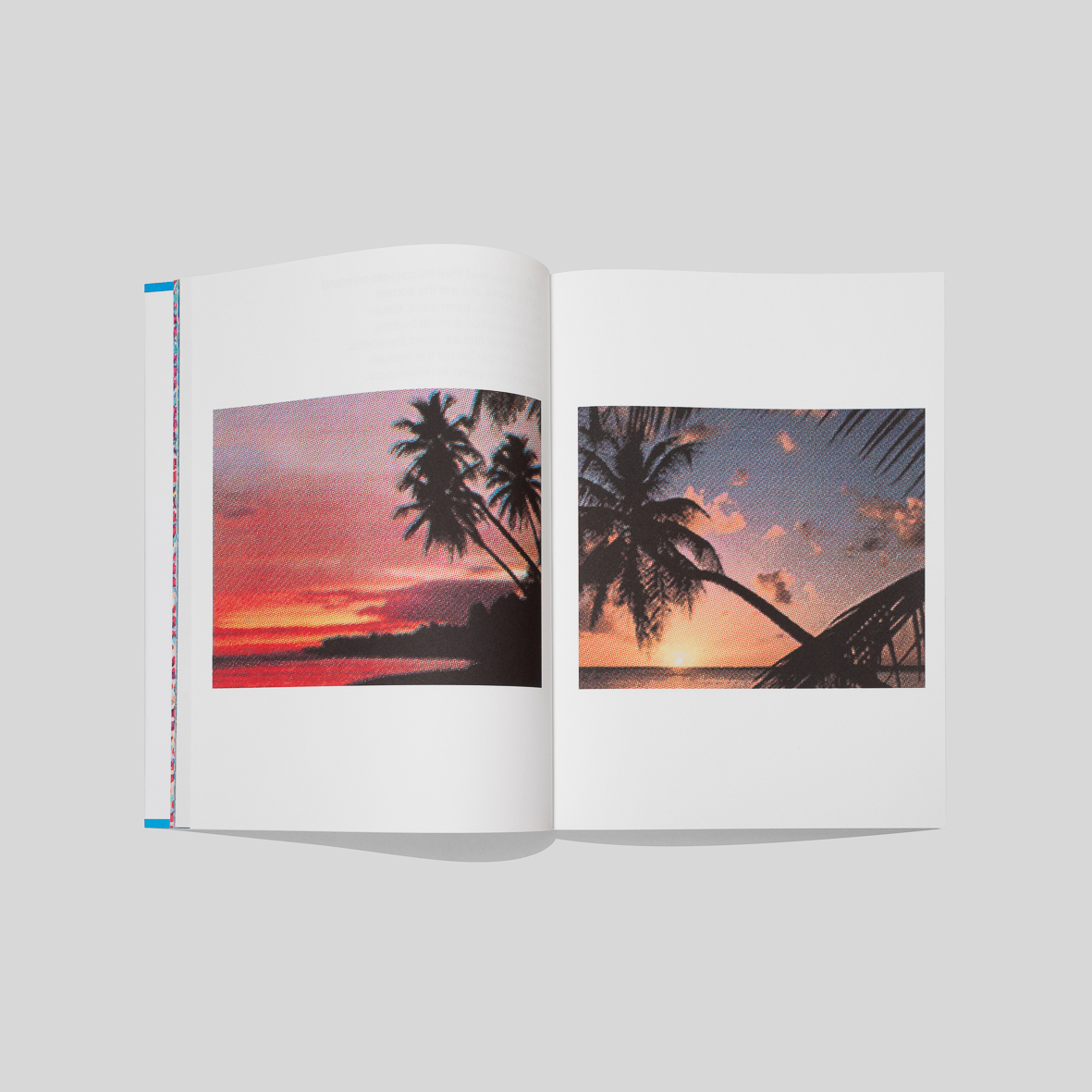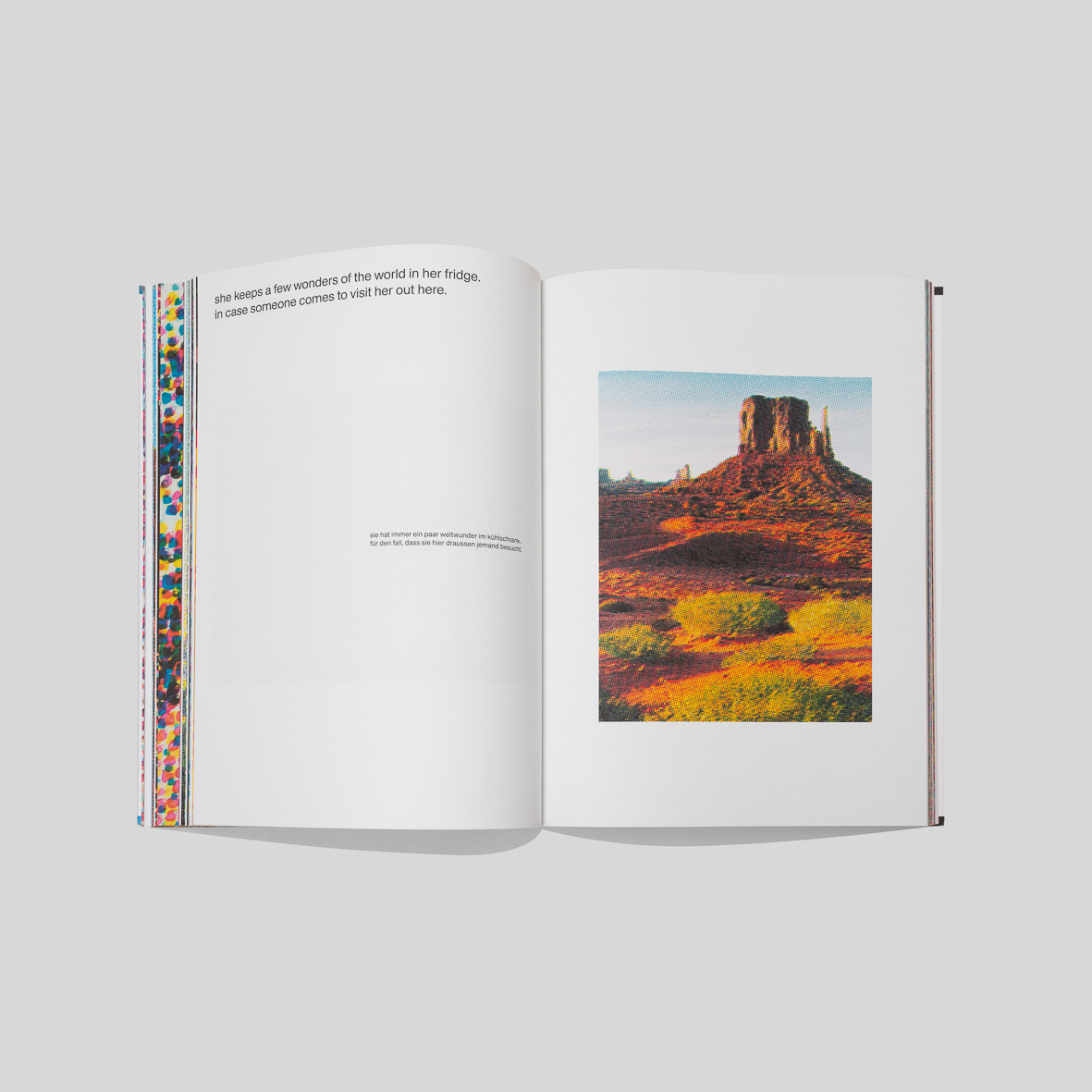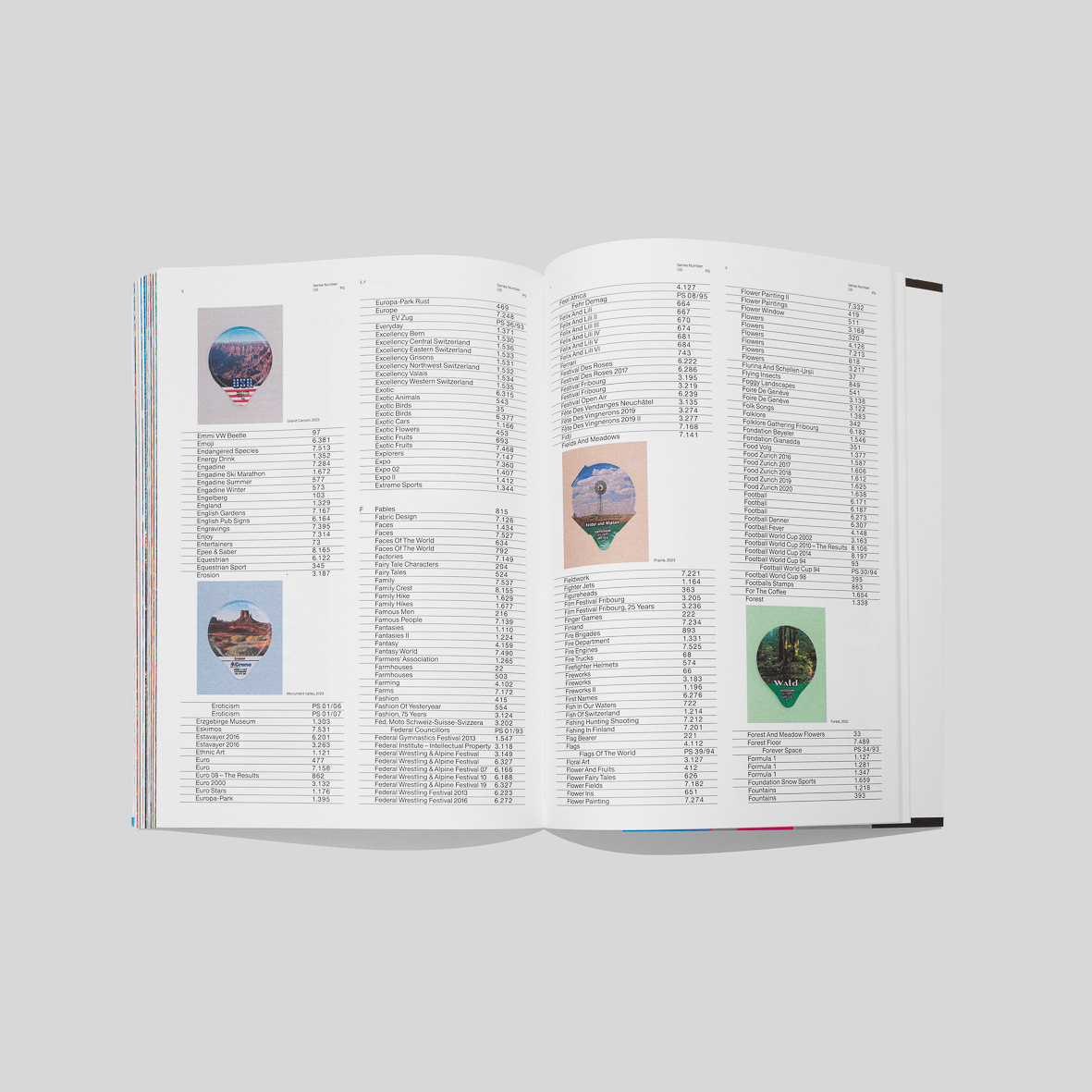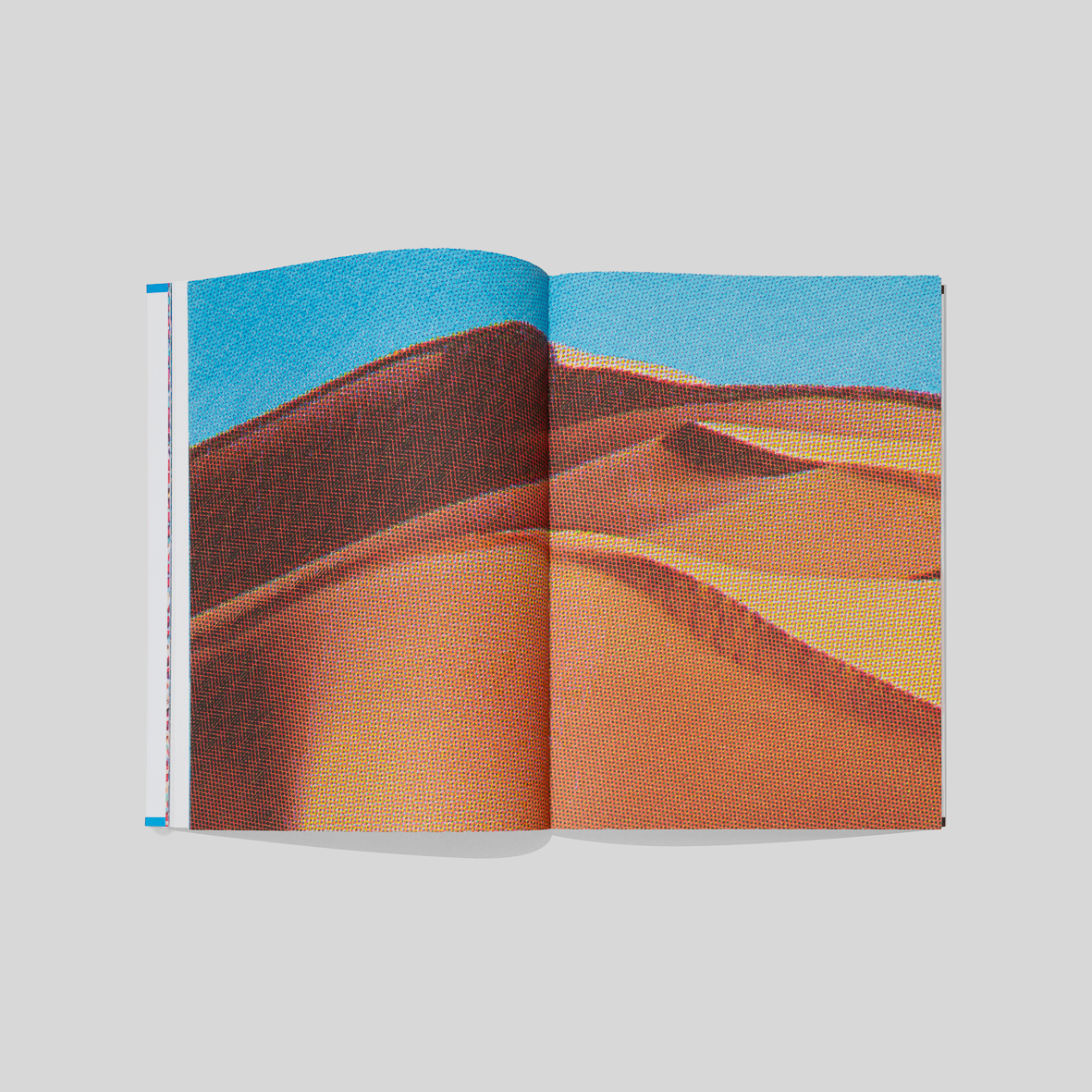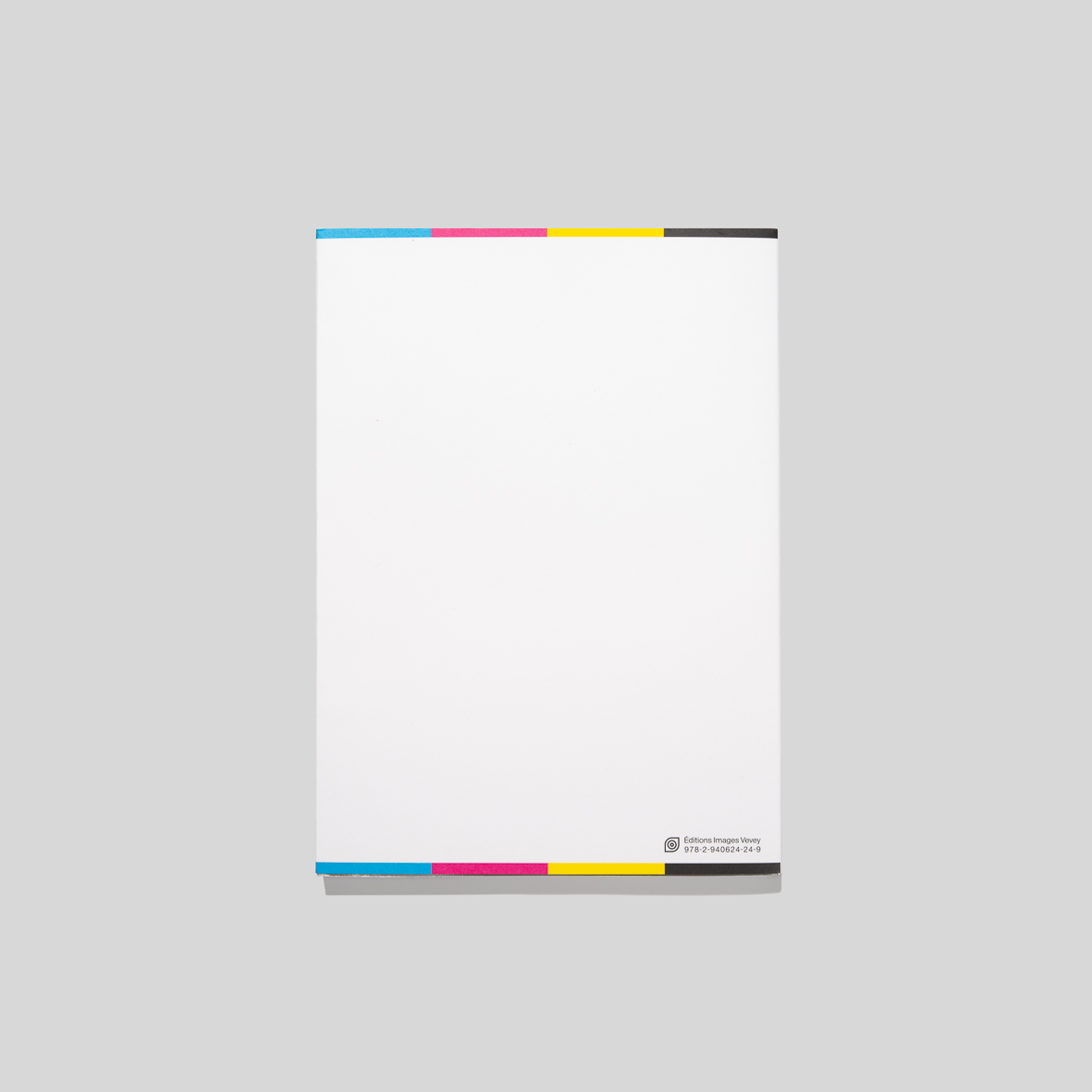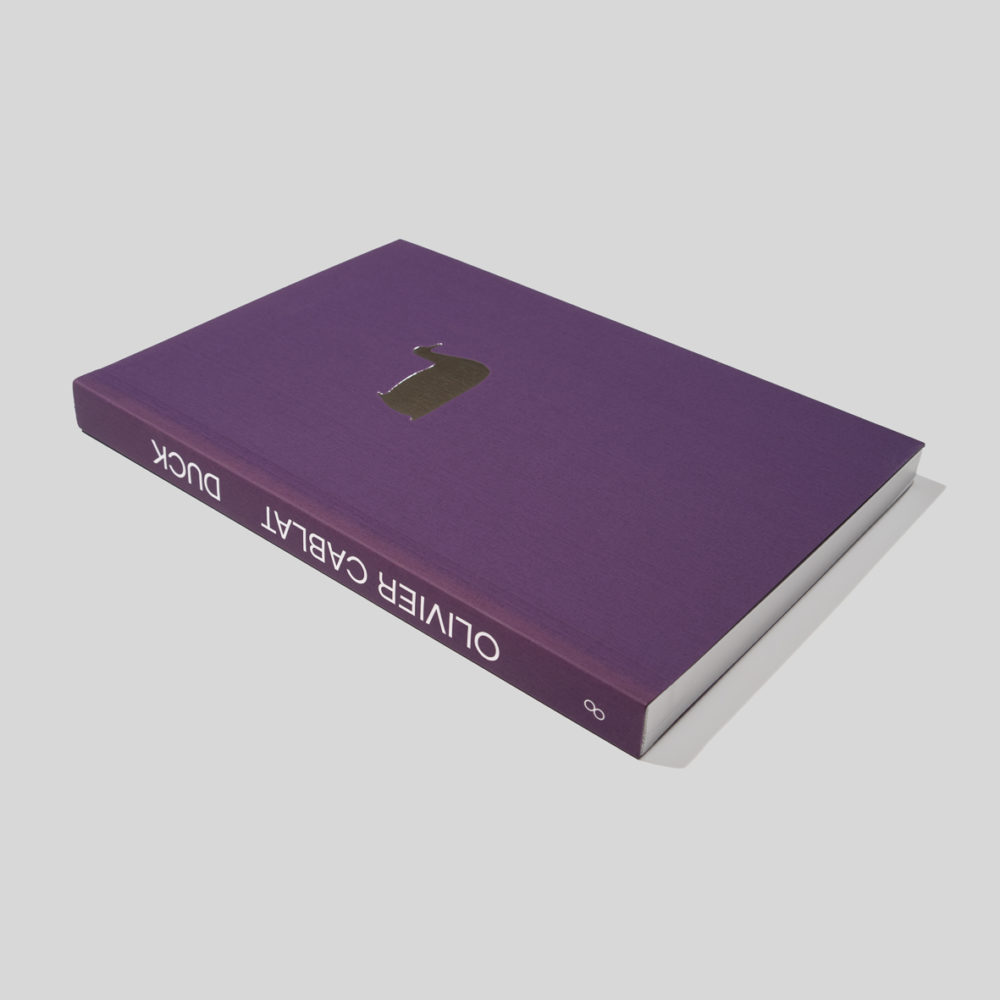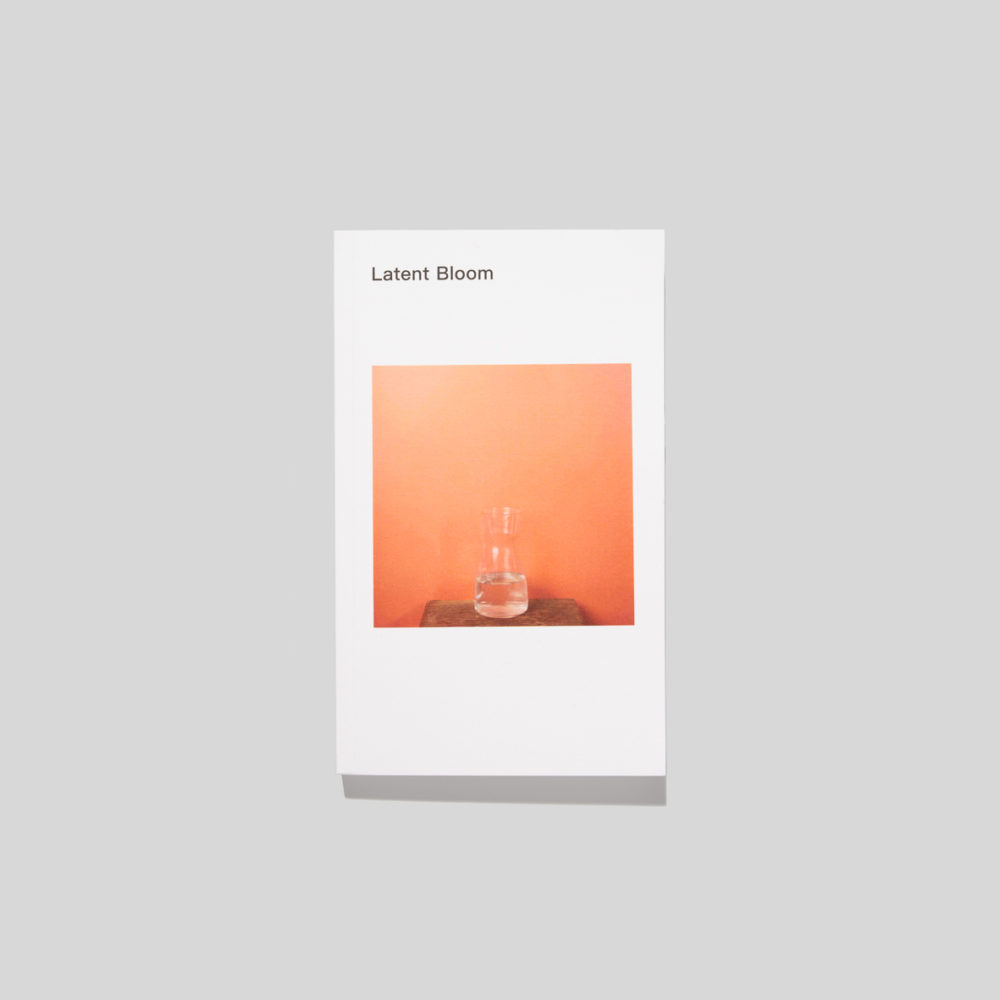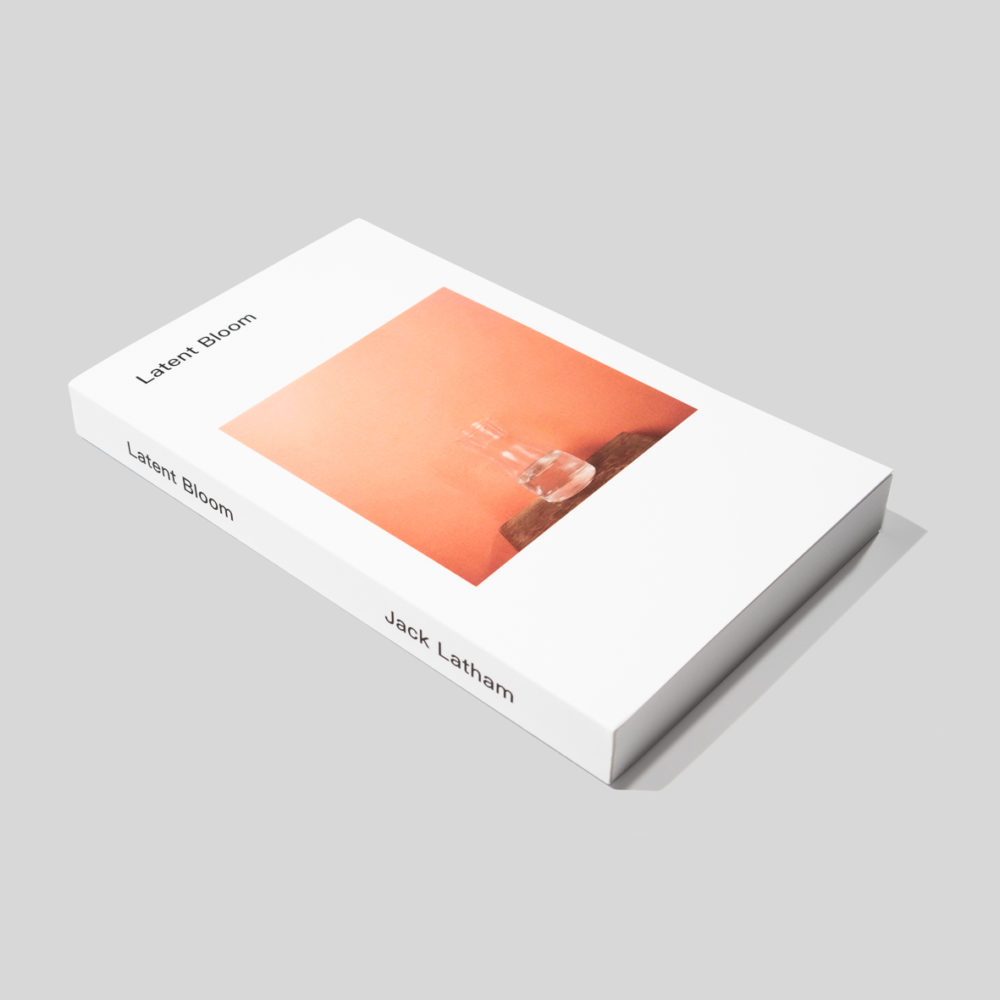42.00 CHF
Pages: 168
Size: 32 × 23 cm
Language: English & Deutsch
ISBN: 978-2-940624-24-9
Year of publication: September 2023
Poems: Simone Lappert
Design: Gilliane Cachin
Translation: Valeska Steiner
Éditions Images Vevey
Since the 1960s, Switzerland has printed millions of pictures on thin peel-off foil lids. For decades, collecting them became something of a Swiss obsession, as they were swapped between collectors to complete a series on a particular topic. Their widespread popularity embedded them in the Swiss collective imagination. The various series represent all genres of photography, from fashion to documentary, portrait, architecture, landscape, etc.
For his Escapism project, Roger Eberhard concentrated on a collection of landscapes, using a high-resolution camera to crop the shots to reclaim extremely close-up images. The artist thus plunges into a very Swiss form of fleeing from everyday life through imagination, for the duration of a coffee break. His series becomes an inventory of archetypal landscapes, the very ones that are threatened by climate change. In reference to Pop Art, only the grid of the drastically enlarged screen prints on display indicates the industrial nature of images and brings the spectator back to reality.
Since the 1960s, Switzerland has printed millions of pictures on thin peel-off foil lids. For decades, collecting them became something of a Swiss obsession, as they were swapped between collectors to complete a series on a particular topic. Their widespread popularity embedded them in the Swiss collective imagination. The various series represent all genres of photography, from fashion to documentary, portrait, architecture, landscape, etc.
For his Escapism project, Roger Eberhard concentrated on a collection of landscapes, using a high-resolution camera to crop the shots to reclaim extremely close-up images. The artist thus plunges into a very Swiss form of fleeing from everyday life through imagination, for the duration of a coffee break. His series becomes an inventory of archetypal landscapes, the very ones that are threatened by climate change. In reference to Pop Art, only the grid of the drastically enlarged screen prints on display indicates the industrial nature of images and brings the spectator back to reality.

